Carton packaging wastewater treatment – Sustainable solution for manufacturing industry
04 Sep, 2025Viet Water is a leading reputable wastewater treatment company in Ho Chi Minh City, having implement...
Professional Technical Solution by VIET WATER
The functional food (nutraceutical) manufacturing industry is growing rapidly in Vietnam. Along with this expansion, wastewater management becomes a critical environmental requirement. Wastewater generated from functional food production contains organic residues, proteins, starch, solvents, chemical detergents, and microbial contaminants — all of which must be treated thoroughly to avoid environmental impacts and comply with national regulations.

With more than 10 years of experience in industrial wastewater treatment, VIET WATER JSC offers turnkey solutions for manufacturing enterprises:
consulting – design – installation – operation – maintenance, ensuring high treatment efficiency, stable performance, and compliance with QCVN 40:2011/BTNMT (Column A/B).
Wastewater typically originates from:
Washing raw materials, equipment, tanks, and pipelines
Extraction, fermentation, mixing, granulation, drying
Cleaning and sanitizing production lines
Domestic wastewater from workers
| Parameter | Concentration Range (mg/L) | Origin |
|---|---|---|
| BOD5 | 500 – 1500 | Organic residues, protein, starch |
| COD | 800 – 2500 | Detergents, solvents, additives |
| SS | 200 – 800 | Fine powders, raw material residues |
| Total Nitrogen | 30 – 80 | Protein-based compounds |
| Total Phosphorus | 10 – 30 | Nutrient additives |
| Oil & Grease | 10 – 50 | Washing mixers, tanks |
Key characteristics:
Highly biodegradable organic matter
Fluctuating concentrations
High color and odor
Contains nutrients (N, P) promoting microbial growth
Therefore, wastewater requires a flexible and efficient multi-stage treatment process.
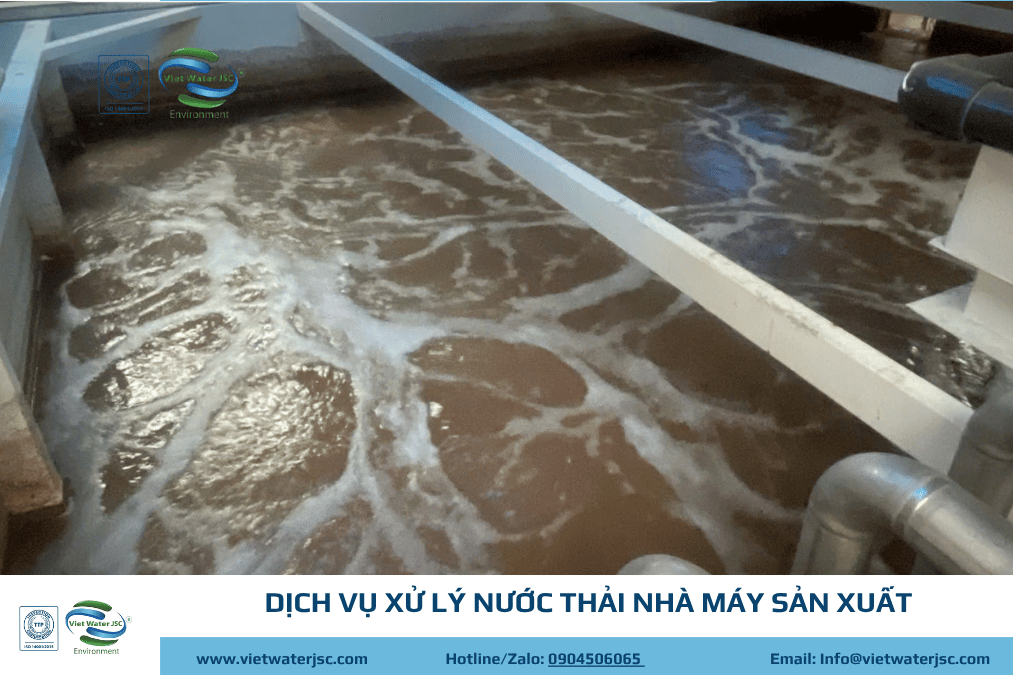
The wastewater treatment system must:
Remove BOD, COD, SS, oil & grease, N, P
Stabilize influent load
Ensure treated water meets QCVN 40:2011/BTNMT
Minimize operational cost
Allow water reuse (floor washing, cooling water) where applicable

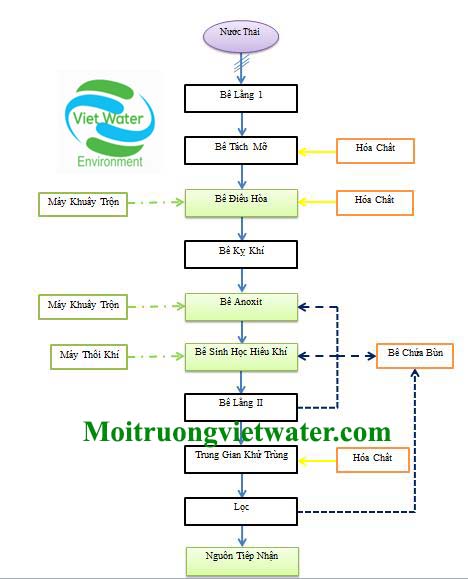
Removes large solids, packaging pieces, and coarse contaminants to protect pumps and downstream equipment.
Balances fluctuations in flow rate and pollutant concentration, ensuring stable operation. Equipped with air diffusers to prevent sedimentation and reduce odor.
Chemical dosing:
PAC for coagulation
Polymer for floc formation
This stage helps remove suspended solids, color, and a portion of COD.
Settles flocculated solids. Sludge is transferred to the sludge holding tank.
This is the core treatment stage, where aerobic microorganisms break down dissolved organic matter.
Advantages of MBBR/MBR:
Higher biomass density
Smaller footprint
Better effluent quality
More stable against shock loads
Separates biomass from treated water.
Returning activated sludge maintains MLSS concentration in the aeration tank; excess sludge is removed.
Using Chlorine or UV, all remaining pathogens are destroyed, ensuring safe effluent discharge.
Sludge is dewatered using a belt press or filter press, then transported and treated according to environmental regulations.
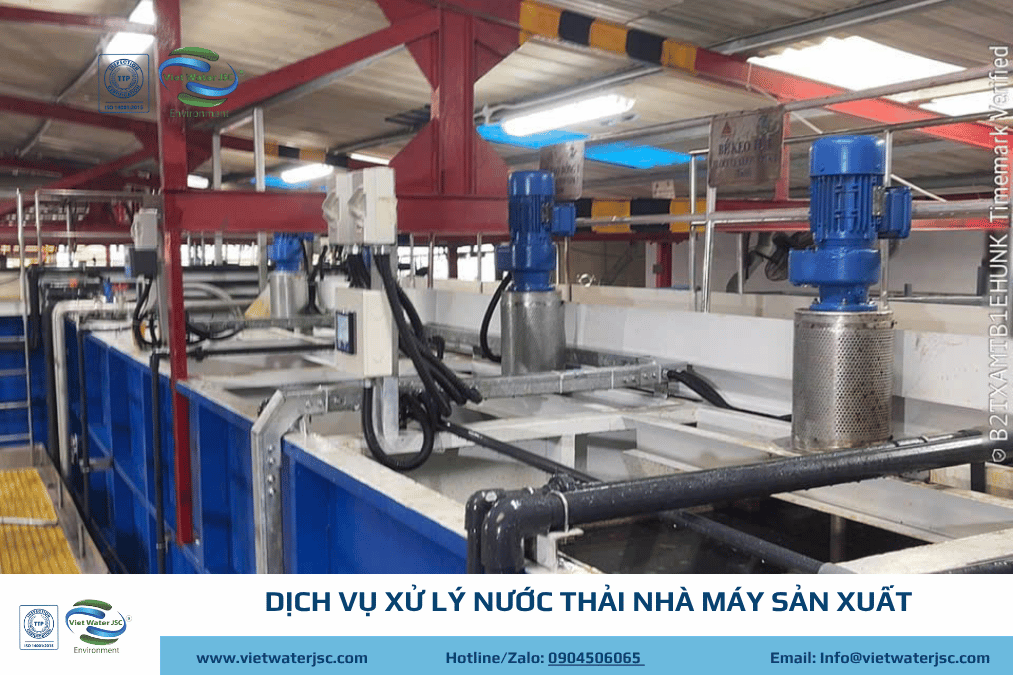
Depending on the client’s requirements and wastewater characteristics, VIET WATER recommends:
MBBR: High-load biological treatment with moving biofilm carriers
MBR: Membrane filtration for high effluent quality
AAO (Anaerobic – Anoxic – Oxic): Excellent nutrient removal (N, P)
Fenton / Ozone: Color removal and oxidation of recalcitrant compounds
These technologies ensure efficient, stable, and environmentally safe wastewater treatment.
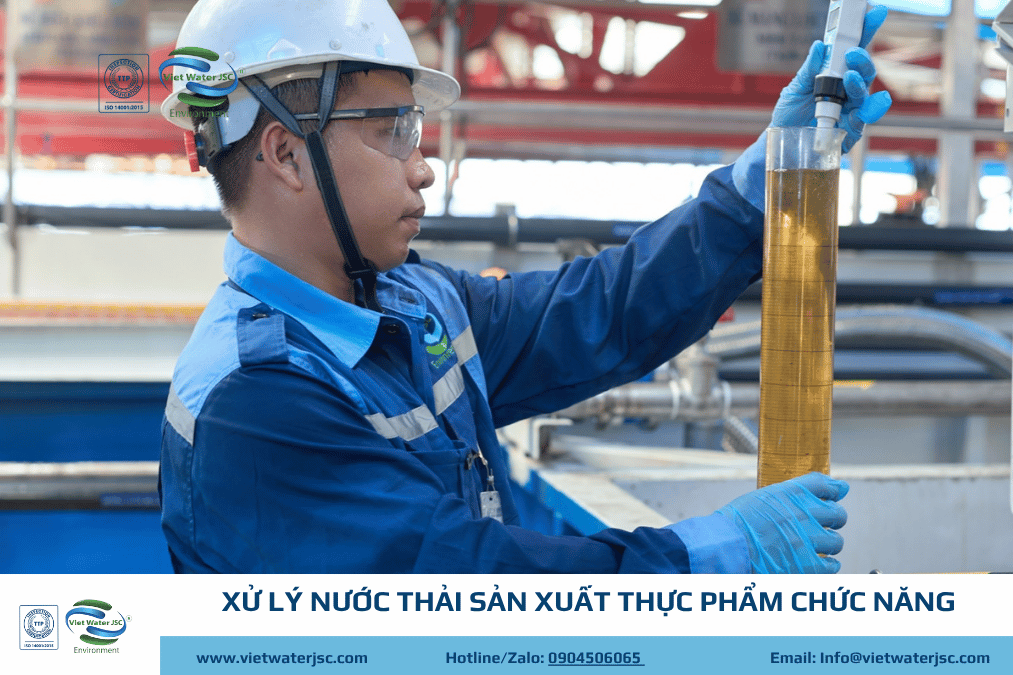
Assessment of wastewater sources, flow, and physical conditions.
Based on laboratory analysis, VIET WATER proposes the most suitable and cost-effective treatment technology.
Includes:
Detailed engineering drawings
Equipment fabrication
Civil construction
System installation
Commissioning & optimization
System is handed over with:
Standard operation procedure (SOP)
Staff training sessions
Compliance certification
Periodic maintenance ensures long-term stability.
24/7 technical support available for all clients.
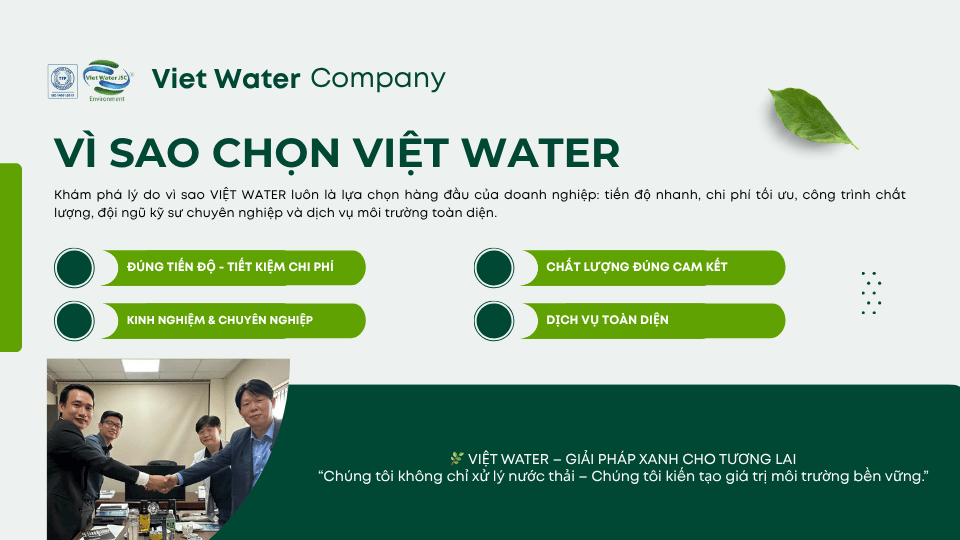
Fast project delivery & cost optimization
High-quality, stable, and compliant systems
Experienced environmental & automation engineers
Full-package services: Documentation – Design – Construction – Operation – Monitoring
Trusted by hundreds of factories nationwide
VIET WATER JOINT STOCK COMPANY
Website: www.vietwaterjsc.com
Technical Hotline: 0904.506.065
Email: info@vietwaterjsc.com